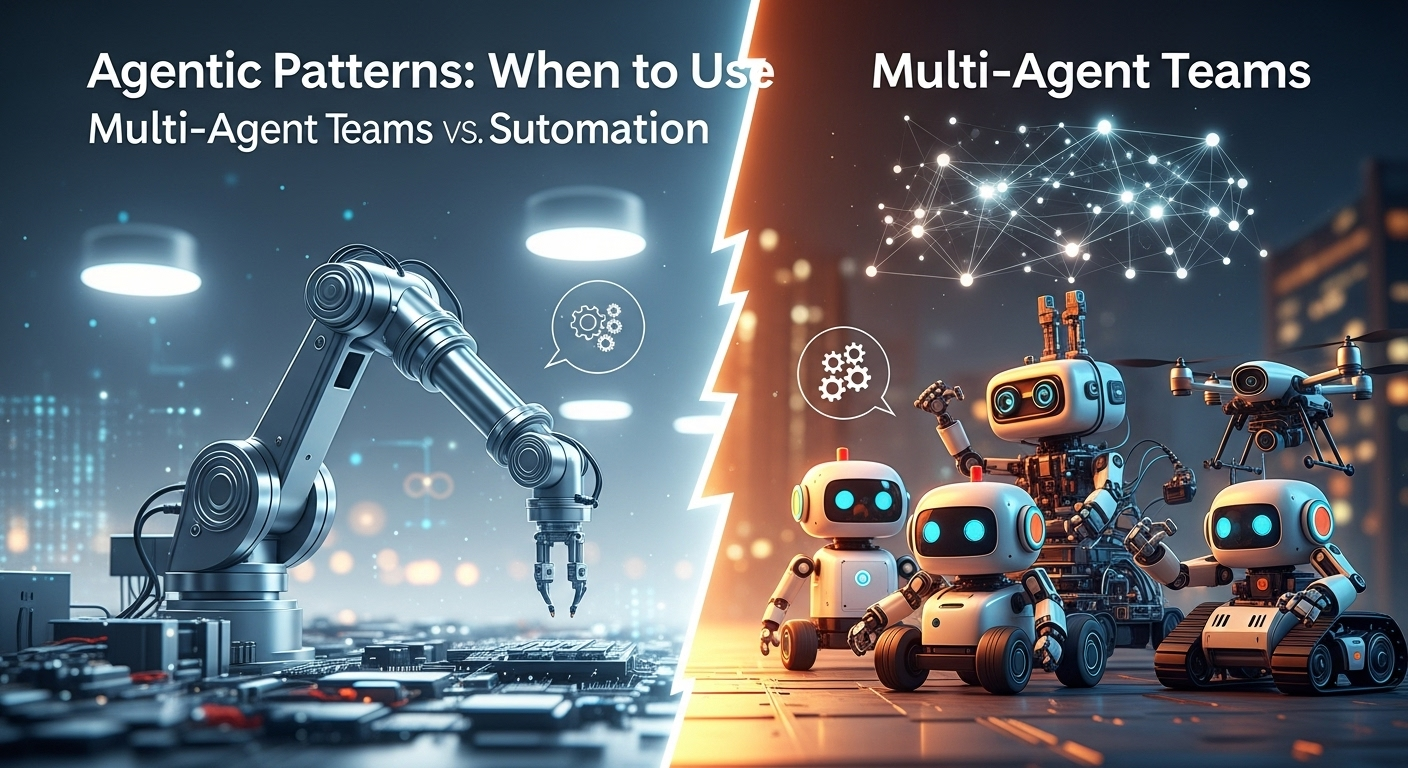You’ve heard the buzz: AI agents are the next big thing. But should you build an army of specialized bots or stick with straightforward automation? The choice could save your team thousands of hours—or create chaos.
What Are Agentic Patterns?
Think of agentic patterns as organizational charts for AI. Instead of one bot doing everything, you create specialized roles—like a customer service team where one agent handles billing, another technical support, and a third escalates complex issues. These patterns determine how AI agents collaborate, communicate, and divide complex tasks.
How Multi-Agent Systems Work
Multi-agent systems operate like a well-oiled corporate team. Each agent has specific capabilities and responsibilities, and they communicate through structured protocols. For example, in a content creation workflow, one agent might research topics, another writes the draft, a third fact-checks, and a final agent optimizes for SEO. They pass work between them, with a “manager” agent coordinating the process and resolving conflicts when they arise.
Benefits & Use Cases
- Complex Problem Solving — Multi-agent teams excel at breaking down intricate challenges into manageable pieces, like software development where different agents handle coding, testing, and documentation
- Specialized Expertise — Each agent can be optimized for specific tasks, similar to having subject matter experts rather than generalists
- Fault Tolerance — If one agent fails, others can often compensate or take over, reducing system-wide failures
- Scalability — Easy to add new specialized agents as needs evolve without redesigning the entire system
Costs & Resource Considerations
Multi-agent systems typically cost 3-5x more to develop and maintain than simple automation. You’re paying for multiple AI model instances, complex orchestration logic, and potentially specialized agents with different capabilities. Simple automation might cost $500-2,000 monthly for standard workflows, while multi-agent setups often run $2,000-10,000+ monthly depending on complexity and agent capabilities.
U.S. Market Trends
American companies are increasingly adopting multi-agent approaches for customer service, software development, and financial analysis. The trend mirrors the shift from single-skill workers to cross-functional teams that dominated corporate restructuring in the 2010s. Silicon Valley startups particularly favor multi-agent patterns for their flexibility and ability to handle the unpredictable nature of early-stage business operations.
Multi-Agent vs. Simple Automation
- Simple Automation — Best for predictable, repetitive tasks with clear rules. Think data entry, scheduled reports, or basic customer queries. Lower cost, faster implementation, but limited adaptability.
- Multi-Agent Teams — Ideal for complex, dynamic scenarios requiring judgment and collaboration. Perfect for research projects, creative work, or problems with multiple solution paths. Higher cost and complexity but greater capability.
Implementation Guide
- Assess Complexity — Map your workflow. If it involves multiple decision points, specialized knowledge areas, or unpredictable outcomes, consider multi-agent
- Start Simple — Implement basic automation first, then identify where it falls short before adding agent complexity
- Define Agent Roles — Create clear responsibilities and communication protocols between agents
- Test Thoroughly — Multi-agent systems can develop unexpected behaviors, so extensive testing is crucial
- Monitor and Optimize — Track how agents collaborate and adjust roles or communication patterns as needed
FAQs
When is multi-agent overkill?
If your workflow follows predictable steps with few exceptions, multi-agent is likely unnecessary. Simple automation handles routine tasks more efficiently and cost-effectively.
How much longer does multi-agent implementation take?
Expect 2-4 months for a robust multi-agent system versus 2-4 weeks for simple automation. The coordination complexity and testing requirements significantly increase development time.
Can I start with simple automation and upgrade later?
Absolutely—and this is often the smartest approach. Build a solid automation foundation, then identify specific pain points that would benefit from specialized agents.
Bottom Line
Choose simple automation for predictable, repetitive tasks and multi-agent teams for complex, dynamic challenges requiring specialized expertise and collaboration. Most organizations benefit from starting simple and strategically adding agent complexity only where it delivers clear value. The pattern isn’t about using the most advanced approach—it’s about using the right approach for each specific challenge.

